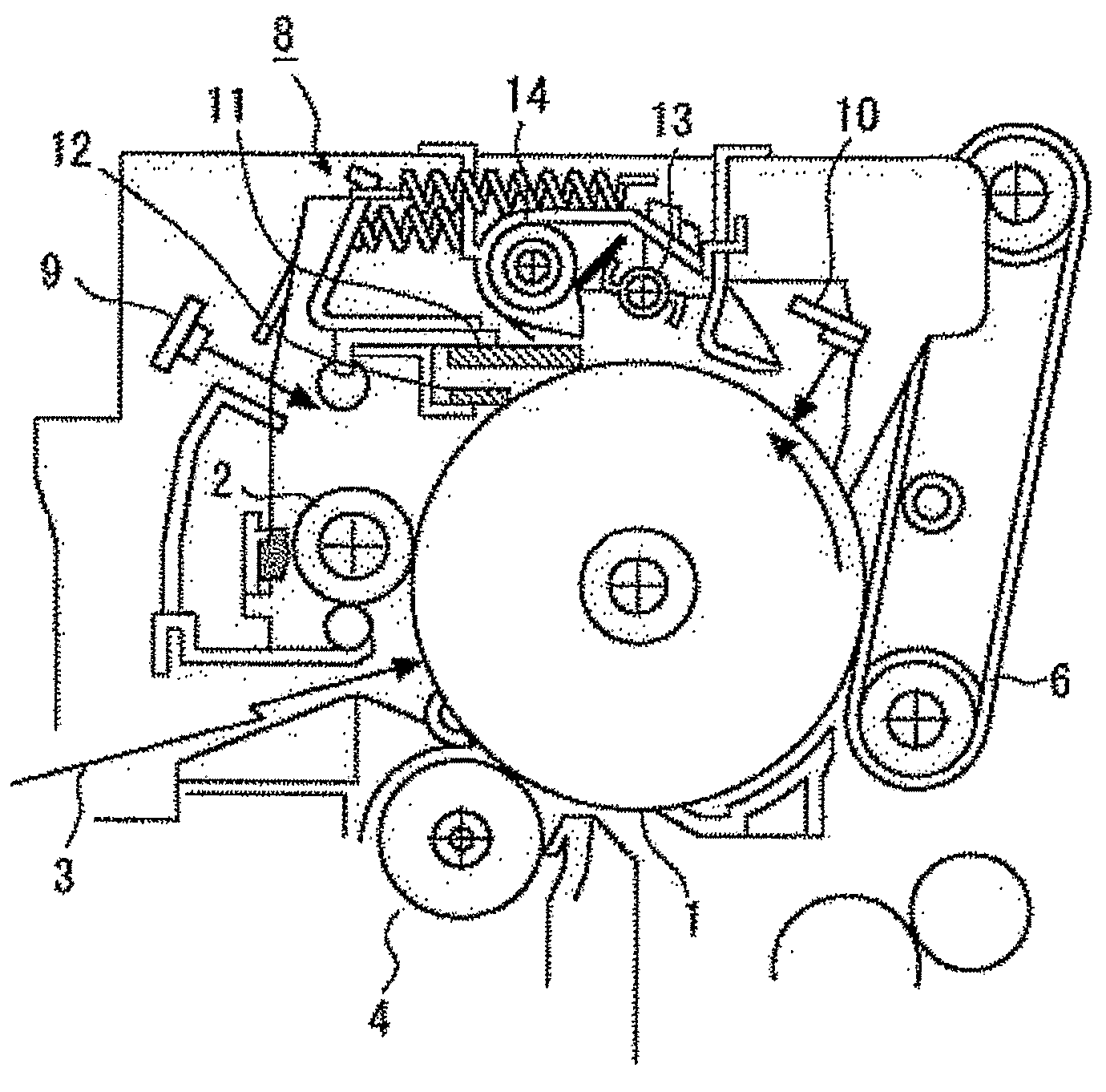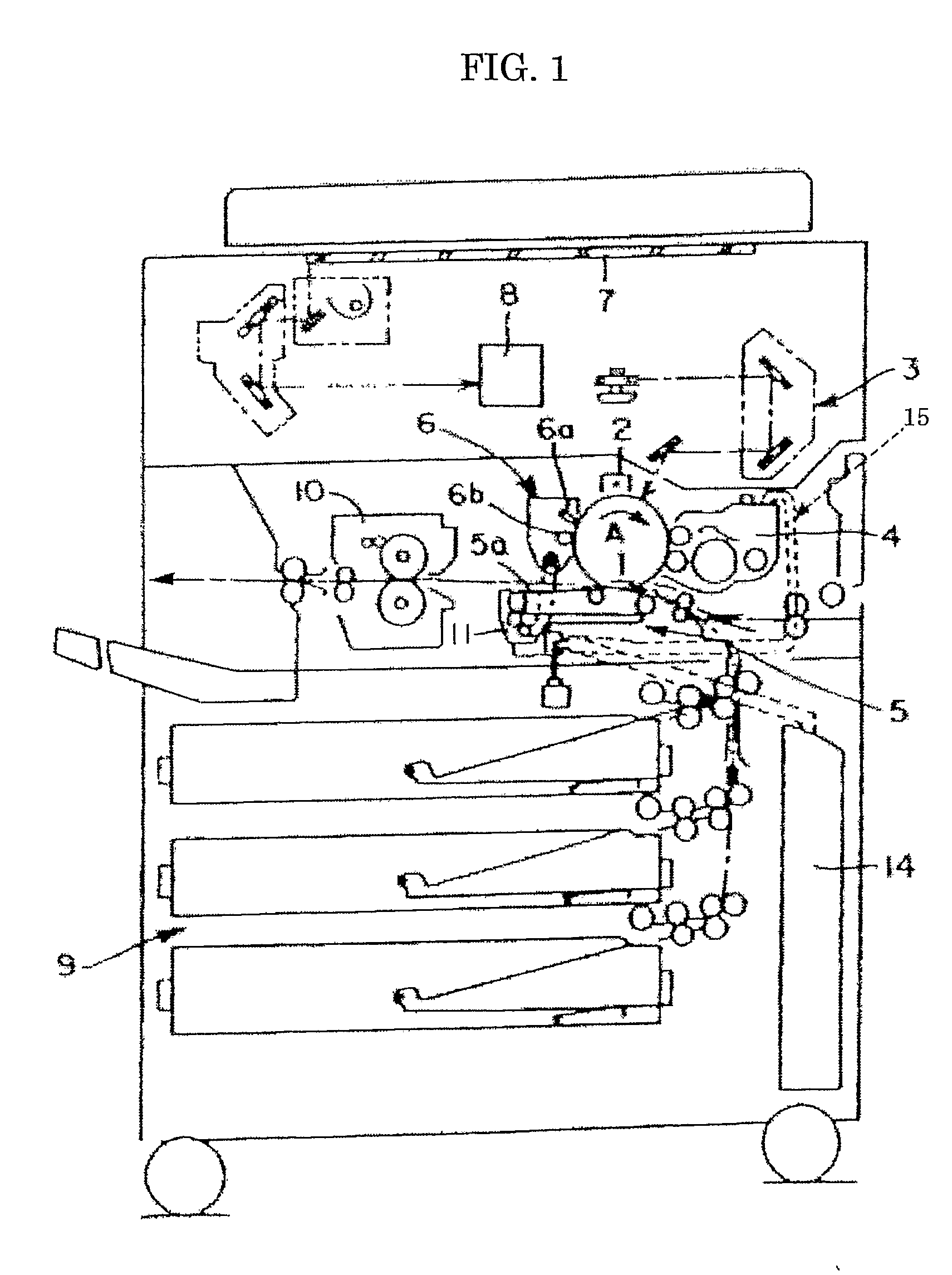Electrostatic image developing toner, two-component developer, image forming method and process cartridge
a technology of developing toner and developing toner particles, applied in the direction of electrographic processes, electrographic processes using charge patterns, instruments, etc., can solve the problems of not all recent fast-copiers have been successfully downsized, the required space for collecting toner particles remaining after transferring toner images is large, and the inability to maintain the ability to stably form high-quality images, etc., to achieve the effect of reducing the fixing temperature and forming high-quality images
- Summary
- Abstract
- Description
- Claims
- Application Information
AI Technical Summary
Benefits of technology
Problems solved by technology
Method used
Image
Examples
production example 1
[0226]—Production of Titanium Oxide Powder—
[0227]Titanium oxide powders A, B, and C were obtained by performing the following steps for respective powders, the steps including: (a) little by little feeding titanium tetraisopropoxide as a base material to glass wool with a chemical pump, where the glass wool was under nitrogen gas (which was used as a carrier gas) environment, and heated to 200° C. so that the fed titanium tetraisopropoxide evaporates, (b) thermolyzing the evaporated gas at 320° C. in a reaction vessel (c) rapidly cooling the obtained thermolized article, and (d) calcinating the thus cooled article at the temperature and for the time in accordance with Table 1.
[0228]From the thus obtained powders A, B, and C, hydrophobic titanium oxide powders A, B, and C were obtained by performing the following steps for respective powders, the steps including: (a) sufficiently dispersing the powder in water (b) adding dropwise 30 parts by mass, based on the solid content, of hydro...
synthesis example 1a
Synthesis of Polyester Resin 1A
[0229]In a four-necked 2 L glass flask equipped with a thermometer, a stainless steel-stirrer, a falling film condenser and a nitrogen feed tube, the following ingredients were placed: 740 g of polyoxypropylene(2,2)-2,2-bis(4-hydroxyphenyl)propane; 300 g of polyoxyethylene(2,2)-2,2-bis(4-hydroxyphenyl)propane; 466 g of dimethyl terephthalate; 80 g of isododecenyl succinic anhydride; 114 g of tri n-butyl 1,2,4-benzenetricarboxylate; and, 10 g of tin(II) octylate. The flask was then placed in an electric mantle heater to react the ingredients under a nitrogen gas environment at 210° C. The first half of the reaction was performed under normal pressure and the later half was performed under reduced pressure. Thus, polyester resin 1A was obtained. The non-dissolved proportion of the polyester resin 1A in tetrahydrofuran was 22%. The peak top molecular weight of the polyester resin 1A was 8,500.
synthesis example 2a
Synthesis of Polyester Resin 2A
[0230]In a four-necked 3 L glass flask equipped with a thermometer, a stainless steel-stirrer, a falling film condenser and a nitrogen feed tube, the following ingredients were placed: 551 g of polyoxypropylene(2,2)-2,2-bis(4-hydroxyphl)propane; 463 g of polyoxyethylene(2,2)-2,2-bis(4-hydroxyphenyl)propane; 191 g of fumaric acid; 169 g 1,2,4-benzenetricarboxylic acid; and, 12 g of tin (II) oxalic oxide. The flask was then placed in the electric mantle heater to react the ingredients under a nitrogen gas environment at 210° C. The first half of the reaction was performed under normal pressure and the later half was performed under reduced pressure. Thus, polyester resin 2A was obtained. The non-dissolved proportion of the polyester resin 2A in tetrahydrofuran was 18%. The peak top molecular weight of the polyester resin 2A was 6,000.
PUM
| Property | Measurement | Unit |
|---|---|---|
| number average particle diameter | aaaaa | aaaaa |
| diameter | aaaaa | aaaaa |
| diameter | aaaaa | aaaaa |
Abstract
Description
Claims
Application Information
 Login to View More
Login to View More - R&D
- Intellectual Property
- Life Sciences
- Materials
- Tech Scout
- Unparalleled Data Quality
- Higher Quality Content
- 60% Fewer Hallucinations
Browse by: Latest US Patents, China's latest patents, Technical Efficacy Thesaurus, Application Domain, Technology Topic, Popular Technical Reports.
© 2025 PatSnap. All rights reserved.Legal|Privacy policy|Modern Slavery Act Transparency Statement|Sitemap|About US| Contact US: help@patsnap.com



